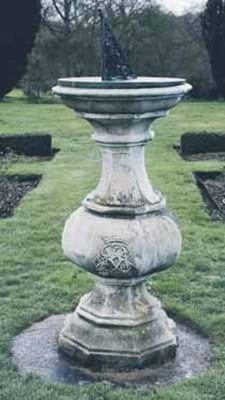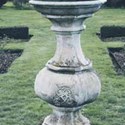The sundial's pedestal base (broken and badly restored) was ascribed to John Van Nost the Elder and fashioned c.1690-1702. The 21in (54cm) circular dial was engraved around the edge with an hour scale with fleur de lys marking the half-hour divisions and diamond indicators for the quarter hours. It sported a fine open-work triangular gnomon that incorporated the monogram AG for Anthony Grey, 11th Earl of Kent, repeated on the base. and stood 4ft 11in (1.5m) high.
Only six horizontal Tompion sundials are known to exist, with other examples in Kew Palace, Hampton Court Palace and in Bath's Pump Rooms with the remaining dials being in private ownership. This previously unrecorded dial, originally commissioned for the 11th Earl, stood in the grounds of his Bedfordshire family seat, Wrest Park.
The vendor's great grandfather purchased Wrest Park in 1917 and removed the dial on its
subsequent sale.
It attracted interest from Tompion clock collectors and sundial buyers,with three buyers contesting it to a winning £150,000. "When I first saw it I got really emotional. It was absolutely beautiful… The British Museum's Thomas Tompion expert Jeremy Evans said it was the best dial he had ever seen," said Sotheby's specialist Catherine Southon.
Sotheby's most expensive clock was an unattributed English ebonised grande sonnerie longcase, dating to c.1695, with a rebuilt architectural-style case top and a later movement. It failed to generate trade enthusiasm but attracted interest from a German private bidder, selling at £15,000. The solid movement of an 1875 English walnut longcase regulator by Frodsham & Co helped this substantial entry to elicit £10,500 from a private buyer.
Tompion’s sunny side
THOMAS Tompion may be England’s most celebrated 18th century horologist, but he is less widely known for his exquisitely crafted sundials, a signed example of which furnished Sotheby’s Bond Street (20/12% buyer's premium) with their undisputed highlight on June 15.








